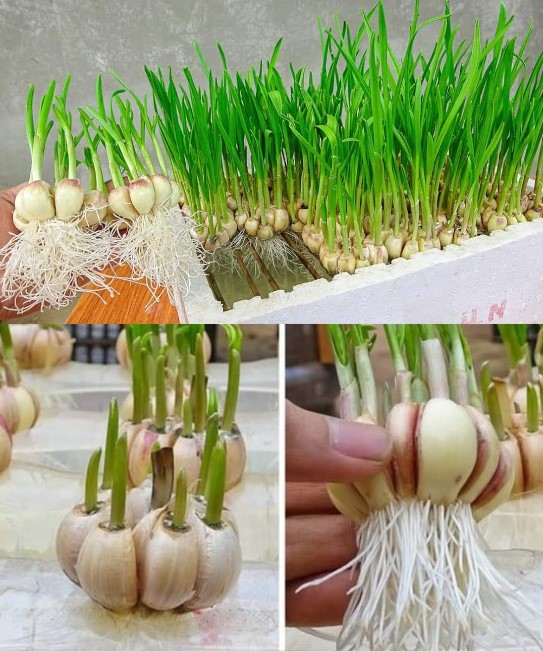Garlic stands out as a widely utilized culinary ingredient, not only for its flavorful contribution to dishes but also for its significant health benefits. Packed with vitamins A, B, C, and E, antioxidants, calcium, potassium, zinc, selenium, and allicin (a potent natural antibiotic), garlic earns its status as a superfood and nutraceutical. While often associated with warding off vampires, this versatile ingredient has a valuable place in your kitchen and health regimen.
Despite its popularity, store-bought garlic can be relatively expensive. However, a single garlic clove possesses the potential to sustain your supply indefinitely. Learn the simple method of cultivating garlic at home in a pot with perpetual results.
What you need:
Potting soil
A head of garlic
A pot
Note: Each bulb you plant will multiply, yielding 3 or 4 new garlic cloves.
Steps for potted garlic:
Acquire a sizable pot, preferably with drainage holes, and fill it with high-quality potting soil. Carefully separate the cloves from the garlic head, ensuring they are fresh and undamaged.
Plant the cloves about 2.5 cm deep with the tips exposed. Maintain a 10 cm distance between each clove. Add a thin layer (barely 1 cm) of potting soil on top.
Position the pot in a sunny spot and water lightly. Garlic requires minimal watering, so maintain slightly moist soil without overdoing it.
Watch as the garlic shoots grow. If blossoms appear, promptly remove them to preserve the flavor of the garlic.
Harvest the garlic when the plants have 5 or 6 leaves, and they begin to yellow and wither.
Dry the harvested garlic in a cool, dry place for about a week, such as a garage or cellar.
Keep in mind that garlic takes 8 to 10 months to grow, with optimal planting periods in early spring or fall. Additionally, the green stems of garlic are edible and can be enjoyed like chives.
By following these straightforward steps, you can enjoy a continuous supply of homegrown garlic, enhancing both your culinary creations and your well-being.
